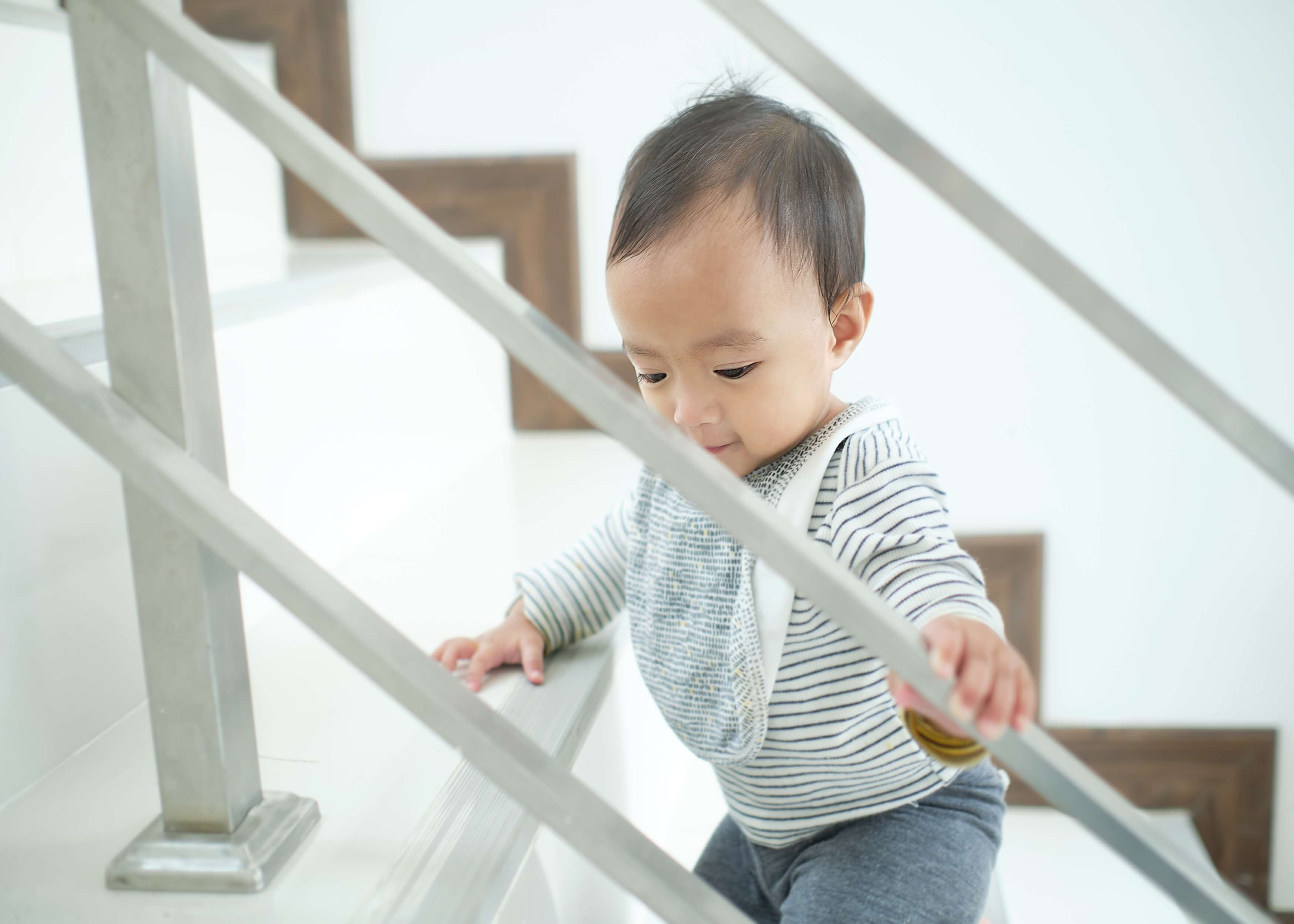Developmental Milestones (OSCE)
Introduction
Developmental milestones:
 ‘Median age of acquisition’: when achieved by 50% of children
‘Median age of acquisition’: when achieved by 50% of children
 ‘Limit age’: when children should have achieved milestone ✅
‘Limit age’: when children should have achieved milestone ✅
 If not achieved by ‘limit age’, it is a red flag meaning more investigations are required ❌
If not achieved by ‘limit age’, it is a red flag meaning more investigations are required ❌
 You should target your questions based on the child’s age ❓
You should target your questions based on the child’s age ❓
 Offer the child toys to play with to aid assessment
Offer the child toys to play with to aid assessment

Developmental areas
Gross motor development:
 Newborn: flexed limbs, head lag
Newborn: flexed limbs, head lag
 6 to 8 weeks: lifts head to 45° 📐
6 to 8 weeks: lifts head to 45° 📐
 6 to 8 months: sits independently, ‘limit age’ = 9 months
6 to 8 months: sits independently, ‘limit age’ = 9 months
 8 to 9 months: crawls
8 to 9 months: crawls
 10 months: stands independently, moves around furniture
10 months: stands independently, moves around furniture
 12 months: unstable walking, ‘limit age’ = 18 months
12 months: unstable walking, ‘limit age’ = 18 months
 15 months: stable walking
15 months: stable walking
 2.5 years: running and jumping 🏃
2.5 years: running and jumping 🏃
Vision and fine motor development:
 6 weeks: turns head to follow movement, ‘limit age’ = 3 months
6 weeks: turns head to follow movement, ‘limit age’ = 3 months
 4 months: reaches for toys, ‘limit age’ = 6 months
4 months: reaches for toys, ‘limit age’ = 6 months
 4 to 6 months: palmar grasp (curl fingers towards palm around object) ✋
4 to 6 months: palmar grasp (curl fingers towards palm around object) ✋
 7 months: passes toys between hands, ‘limit age’ = 9 months ✋
7 months: passes toys between hands, ‘limit age’ = 9 months ✋
 10 months: mature pincer grip (using thumb and index fingertips to pick up small objects), ‘limit age’ = 12 months
10 months: mature pincer grip (using thumb and index fingertips to pick up small objects), ‘limit age’ = 12 months
 16 to 18 months: uses crayons to make marks
16 to 18 months: uses crayons to make marks
 Brick building: tower of 3 (18 months), tower of 6 (2 years), tower of 8/train of 4 (2.5 years), bridge (3 years), steps (4 years)
Brick building: tower of 3 (18 months), tower of 6 (2 years), tower of 8/train of 4 (2.5 years), bridge (3 years), steps (4 years)
 Pencil skills without copying: draws line (2 years), draws circle (3 years), draws cross (3.5 years), draws square (4 years), draws triangle (5 years) (Pencil skills with copying: 6 months prior)
Pencil skills without copying: draws line (2 years), draws circle (3 years), draws cross (3.5 years), draws square (4 years), draws triangle (5 years) (Pencil skills with copying: 6 months prior)
Hearing, speech and language development:
 Newborn: startles at loud noises 👂
Newborn: startles at loud noises 👂
 3 to 4 months: vocalises, coos, laughs
3 to 4 months: vocalises, coos, laughs
 7 months: soft sounds, polysyllabic babble
7 months: soft sounds, polysyllabic babble
 7 months: uses sounds randomly
7 months: uses sounds randomly
 10 months: uses sounds properly to mama/dada
10 months: uses sounds properly to mama/dada
 12 months: 2 to 3 words (excluding mama/dada) and understands name 👂
12 months: 2 to 3 words (excluding mama/dada) and understands name 👂
 18 months: 6 to 10 words
18 months: 6 to 10 words
 20 to 24 months: 2+ word phrases
20 to 24 months: 2+ word phrases
 2.5 to 3 years: 3 to 4 word sentences
2.5 to 3 years: 3 to 4 word sentences
Social, emotional and behavioural development:
 6 weeks: responds with a smile, ‘limit age’ 8 weeks
6 weeks: responds with a smile, ‘limit age’ 8 weeks
 6 to 8 months: puts food in mouth on own 🍩
6 to 8 months: puts food in mouth on own 🍩
 10 to 12 months: waves goodbye and plays peek-a-boo
10 to 12 months: waves goodbye and plays peek-a-boo
 12 months: uses 2 hands to drink from cup
12 months: uses 2 hands to drink from cup
 18 months: gets food to mouth using spoon
18 months: gets food to mouth using spoon
 18 to 24 months: symbolic play (using objects/actions/ideas in play), ‘limit age’ = 2 to 2.5 years
18 to 24 months: symbolic play (using objects/actions/ideas in play), ‘limit age’ = 2 to 2.5 years
 2 years: toilet trained during daytime, removes some of own clothing
2 years: toilet trained during daytime, removes some of own clothing
 2.5 to 3 years: parallel play (playing alongside others but do not influence each other), development of interactive play, takes their turn
2.5 to 3 years: parallel play (playing alongside others but do not influence each other), development of interactive play, takes their turn
Summary:
- Assess gross motor development
- Assess vision and fine motor development
- Assess hearing, speech and language development
- Assess social, emotional and behavioural development
Related Articles
This step by step guide is designed to take you through the Hearing assessment and otoscopy in OSCEs.














